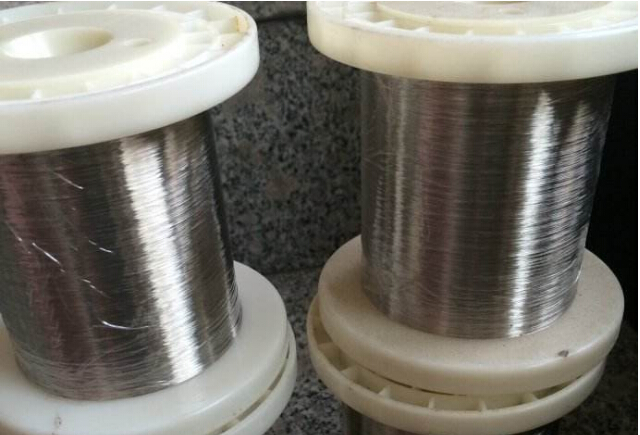The disadvantage of FeCrAl electrothermal alloy is that its high temperature strength is low and its plasticity increases with the increase of temperature. Materials above 1000 ℃ are often deformed due to the slow elongation of their own weight. In addition, after being used for a long time at high temperature, it becomes brittle with the grain growth after cooling with the furnace and cannot be bent in the cold state. These shortcomings should be avoided and overcome in design and use.

1. Fe-Cr-Al electrothermal alloy material is used at high temperature in the atmosphere. The maximum service temperature of HRE alloy in FeCrAl electrothermal alloy is up to 1400 ℃, while the maximum service temperature of Cr20Ni80 alloy in Ni-Cr electrothermal alloy is 1200 ℃.
2. The service life of Fe-Cr-Al alloy material is long, and the life of Fe-Cr-Al element is 4 times as high as that of Ni-Cr element at the same high service temperature in the atmosphere.
3. The surface load of Fe-Cr-Al electrothermal alloy material is high. Because Fe-Cr-Al alloy has high allowable temperature and long life, the surface load of the element can also be higher, which not only makes the heating up faster, but also saves the alloy material.
4. The oxidation resistance is good, the Al2O3 oxide film formed on the surface of the iron-chromium aluminum alloy is compact, the adhesion performance with the matrix is good, and the pollution is not easily caused by the scattering. In addition, the Al2O3 has high resistivity and high melting point, and these factors determine that the Al2O3 oxide film has excellent oxidation resistance. The anti-carburizing performance is also better than that of Cr2O3 which is generated on the surface of the Ni-Cr alloy.
5. The specific gravity of Fe-Cr-Al alloy is small, and the specific gravity of Fe-Cr-Al alloy is smaller than that of Ni-Cr alloy, which means that it is more economical to use Fe-Cr-Al than Ni-Cr in making the same components.
6. The resistivity of Fe-Cr-Al alloy is high, and the resistivity of Fe-Cr-Al alloy is higher than that of Ni-Cr alloy. This is particularly important for fine alloy wires. When the material of the same specification is selected, the higher the resistivity is, the more the material is saved, and the smaller the position of the element in the furnace is. In addition, the resistivity of Fe-Cr-Al alloy is less affected by cold working and heat treatment than that of Ni-Cr alloy.
7. FeCrAl has good corrosion resistance when the sulfur atmosphere and surface are polluted by sulfur-containing substances, while Ni-Cr will be seriously eroded.
8. Fe-Cr-Al electrothermal alloys are cheap, and Fe-Cr-Al does not contain scarce nickel, so the price is much cheaper than Ni-Cr.
In general, Fe-Cr-Al electrothermal alloys have high oxidation resistance in the air and are stable in the atmosphere of sulfur and hydrogen, but the reducing atmosphere of sulfur will affect its service life. Pure hydrogen and ammonia decomposition have no harm to Fe-Cr-Al alloy, but its durability in partially burned ammonia is poor, its service life in direct exposure to nitrogen is lower than that in air. Electrothermal alloy can not be used in halogen and its compounds or in its atmosphere. Common refractories contain low melting point compounds formed with the protective film on the surface of Fe-Cr-Al alloy at high temperature, thus accelerating the damage of electrothermal alloys. Therefore, high-alumina refractory bricks with content less than 1.5% and above 48% should be adopted. Magnesia refractory products can also be used as lining; clay bricks can be used at lower temperatures.
Attending exhibitions, focusing on industry devolpment trend and new technologies,Nexteck Technology Limited keeps pace with the times ,exploring and innovating so as to achievingcontinous development.
TAG: Electrothermal Alloy




